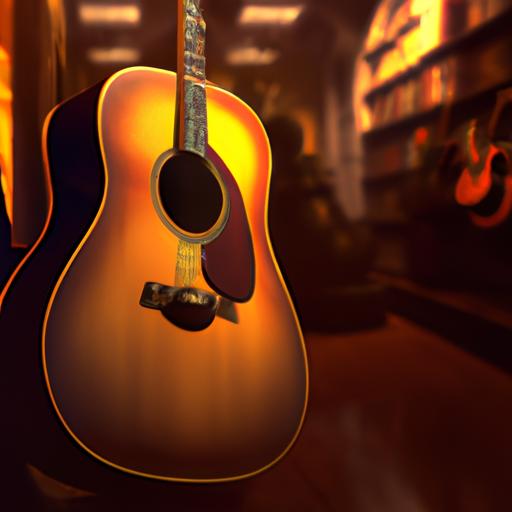Do you want to learn how to record your guitar and share your music with the world? Then you’ve come to the right place! In this step-by-step guide, you’ll learn how to easily record your guitar on GarageBand.
We’ll cover everything from gathering the necessary equipment and tools, connecting your audio interface to your computer, selecting the guitar track, recording and editing the track, and finally mixing and exporting the track.
So grab your guitar and let’s get started!
Table of Contents
Short Answer
To record guitar on Garageband, you first need to connect your guitar to your computer using an audio interface or USB cable.
Then, open Garageband and create a new project, selecting the guitar amp setting.
From there, you can adjust the input and output settings and begin recording.
Finally, you can add additional effects to your recording to customize your sound.
Gathering the Necessary Equipment & Tools
Recording guitar on GarageBand is a great way to create professional-sounding tracks without expensive studio equipment.
Before you start, youll need to gather the necessary equipment and tools.
First, youll need a guitar and an audio interface.
An audio interface is a device that connects your guitar to your computer.
It allows you to record the audio from your guitar directly into your computer.
You can find a variety of audio interfaces to suit your needs and budget, so make sure to do your research beforehand.
Youll also need a microphone – this is essential for recording your guitar.
Lastly, youll need the basics of setting up an audio interface and connecting it to your computer.
If youre not familiar with this process, you can always consult the manufacturers instructions or look for tutorials online.
Once you have all the necessary equipment and tools, youre ready to start recording.
Connecting Your Audio Interface to Your Computer

Connecting your audio interface to your computer is an essential step when recording guitar on GarageBand.
An audio interface, or sound card, is a device that allows you to connect your guitar to your computer and then record the sound into your DAW (digital audio workstation) software.
You will need to connect the audio interface to your computer using a USB cable, and then connect your guitar to the audio interface using a guitar cable.
This will allow the audio signal to be sent from your guitar to your computer.
Once your audio interface is connected to your computer, you will need to check the settings in GarageBand.
Make sure the input source is set to your audio interface, and the output source is set to your computers speakers or headphones.
You will also want to set the input gain correctly.
This will ensure that the audio signal is not too quiet or too loud.
After the settings are adjusted, you are ready to start recording guitar in GarageBand!
Selecting the Guitar Track in the Tracks List
When it comes to recording guitar on GarageBand, the first step is selecting the guitar track in the tracks list.
To do this, open the Tracks panel and click the “+” icon.
This will open a pop-up window with various track types.
Select the “Guitar” option from the list and click “Create”.
This will add a new guitar track to the tracks list.
You can also choose to record multiple guitars by creating multiple guitar tracks.
Once your guitar track is set up, you can make further adjustments as needed.
You can change the track name, add effects, and adjust the volume.
You can also select an audio input source for the track.
This lets you connect your guitar to your computer via an audio interface, and it will be routed to the guitar track in GarageBand.
Finally, you can adjust the track settings.
Adjusting the track settings allows you to customize the track to your needs.
You can choose to record on mono or stereo, and you can select the sample rate and bit depth.
You can also choose to record in real-time or loop mode.
Once your settings are set, you are ready to record.
Recording the Guitar Track in GarageBand

Recording the guitar track in GarageBand is a relatively easy process, once you have the necessary equipment and know-how.
First, you’ll need a guitar, an audio interface, and a microphone.
The audio interface will allow you to connect your guitar to your computer and record directly into GarageBand.
Once you’ve connected your equipment, you can select the guitar track in the tracks list and use the record button to record directly into GarageBand.
When recording your guitar track, it’s important to keep in mind the desired sound you want to achieve.
You can use GarageBand’s built-in effects to shape your sound, or you can use external plugins or VSTs for a more complex sound.
Once you have your sound down, you can use the built-in editing tools to refine it and create the perfect guitar track.
When recording multiple guitar tracks for a song, you can also use the “Take” feature in GarageBand to record multiple takes and then select the best one.
This is a great way to ensure that you get the perfect guitar tone for your project.
Once you have your guitar track recorded and edited, you can mix your track and export it for sharing or further editing.
You can also use the “Share” feature in GarageBand to upload your track to the web for others to listen and collaborate.
Recording guitar in GarageBand is a great way to create professional-sounding tracks without expensive studio equipment.
With a bit of practice and know-how, you can easily record and edit guitar tracks in a variety of ways and create the perfect guitar track for your project.
Editing the Recorded Track
Once youve recorded your guitar track, its time to start editing.
GarageBand has a wide range of tools to help you perfect your sound, including a range of effects and mixing features.
To get started, select the guitar track from the tracks list and then open the editing window.
Here, you can adjust the level, pan, and effect settings for the track.
You can also add effects such as reverb and delay, or use the built-in EQ to fine-tune the sound.
If you want to go further, you can use the built-in automation tools to shape the sound of the track.
Automation allows you to adjust the volume, pan, or effect settings of the track over time, which can be a great way to add dynamics and movement to your guitar parts.
Once youve edited the track to your satisfaction, its time to mix it.
GarageBand has a range of mixing tools to help you get a great sounding track.
You can add effects such as compression or EQ to the master track to shape the overall sound, and use the built-in mixing console to adjust the levels of each track.
Once youre happy with the mix, you can then export the track for sharing or further editing.
Mixing the Track

Once you have recorded your guitar track into GarageBand, the next step is to mix it in order to create a professional-sounding final product.
Mixing is the process of combining the various elements of a track and balancing them to create a cohesive sound.
With GarageBand, you can mix your track with a variety of tools and effects.
To start, you can adjust the volume levels of your guitar track and other elements in the Mixer window.
This will give you a better sense of how the track is sounding.
You can also apply a variety of effects to the track in the Effects window.
Effects like reverb, delay, and distortion can help to give your track a unique sound.
Once you have adjusted the volume levels and applied effects, you can use the Master Track to balance the overall levels of the track and add any final touches.
Finally, you can export your track to share it with others or further edit it in other audio programs.
By following these steps, you can easily record and mix guitar tracks in GarageBand and create professional-sounding recordings.
Exporting the Track
Exporting your track is the final step in your recording process.
After you have perfected your guitar track and mixed it to your liking, you can export it for further editing or sharing.
To do this, you will need to select the Export Song to Disk option from the File menu.
This will bring up the Export Song dialog box, where you can select the format of the exported file and specify a name and location for the file.
You can choose to export the track as an MP3, WAV, or AIFF file, depending on the requirements of the application you are using.
Once you have chosen the format and a name and location for the file, you can click the Export button to finish the process.
When the process is complete, you will have a finished track that you can share with friends or use for further editing.
Final Thoughts
Recording guitar on GarageBand is a great way to create professional-sounding tracks without expensive studio equipment.
With the step-by-step guide outlined above, you can now confidently record your own guitar tracks and create amazing music with GarageBand.
Now that you know how to record guitar on GarageBand, why not give it a try? Put your newfound knowledge to the test and see what you can create!

